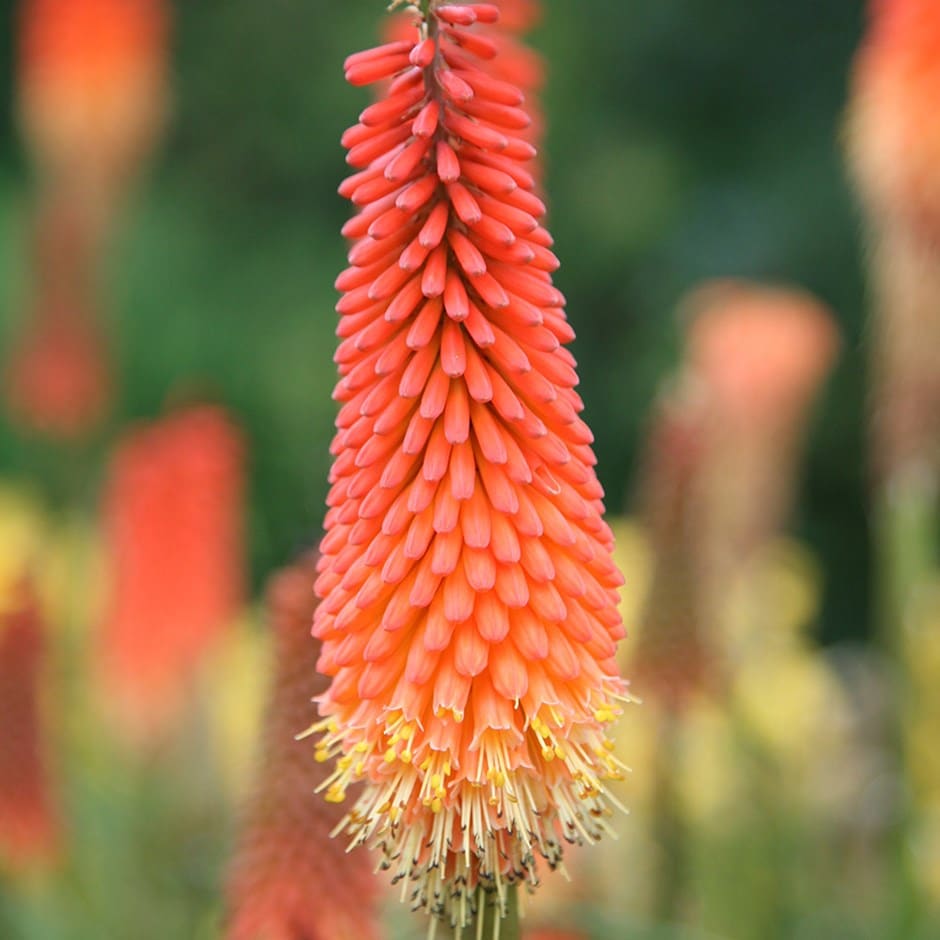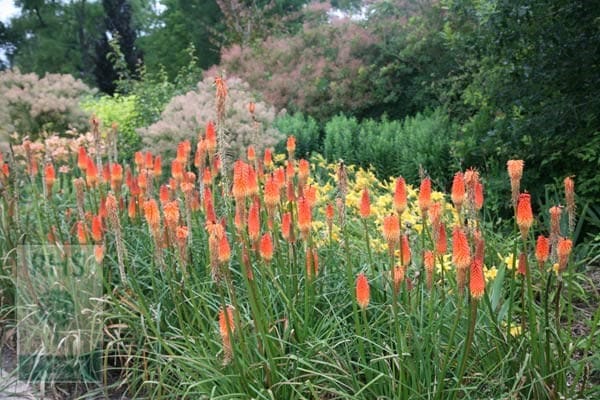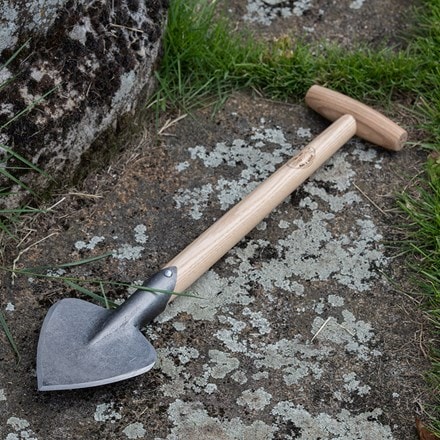Kniphofia 'Royal Standard'
red hot poker
- 9cm pot
- £14.99
- In stock (shipped within 2-3 working days)
- 3 × 9cm pots
- £32.99 £11.00 each
- In stock (shipped within 2-3 working days)
- 2 litre pot
- £19.99
- In stock (shipped within 2-3 working days)
- 3 × 2 litre pots
- £49.99 £16.66 each
- In stock (shipped within 2-3 working days)
Delivery options
- Standard £5.99
- Position: full sun or partial shade
- Soil: fertile, humus-rich, moist, well-drained soil
- Rate of growth: average
- Flowering period: July to August
- Hardiness: fully hardy
Tall bright and imposing, kniphofias lend height, vibrancy and drama to any garden. 'Royal Standard' produces spikes of bright yellow tubular flowers, scarlet in bud, above clumps of evergreen, strap-like leaves. Originally from South Africa, the elegant, torch-like flowers of kniphofia make vertical accents in a sunny border and look particularly good as part of a scheme based on 'hot' colours. They also look great with a background of ornamental grasses. An easy and undemanding plant.
Choose a sunny location with well-drained soil. Prepare the area by incorporating organic matter and ensuring good drainage. Space plants about 60-90cm (2-3ft) apart, planting at the same depth as they were in their containers.
Water thoroughly after planting and mulch to retain moisture. Once established, Kniphofia is relatively drought-tolerant but benefits from regular watering during dry spells.
Feed in spring with a balanced, slow-release fertiliser. In autumn remove and compost the faded flower spikes and apply a deep dry mulch such as pine needles around the crown of the plant.
Cut back to the ground in spring to keep the foliage fresh-looking.
Water thoroughly after planting and mulch to retain moisture. Once established, Kniphofia is relatively drought-tolerant but benefits from regular watering during dry spells.
Feed in spring with a balanced, slow-release fertiliser. In autumn remove and compost the faded flower spikes and apply a deep dry mulch such as pine needles around the crown of the plant.
Cut back to the ground in spring to keep the foliage fresh-looking.



